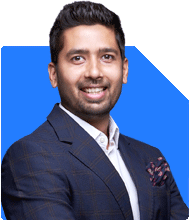I am having following mutual funds:
1. Quant active - ? 6000
2. PGIM flexi cap -?5000
3.Quant small cap - ?9000
4. Moti lal oswal midcap -?5000
5. Invesco large and mid cap ?4000
6.HDFC large and mid cap ? 5000
Please advise whether I should continue with these funds. Investing since 1/2018
Ans: Evaluating your mutual fund portfolio is essential to ensure it aligns with your financial goals and risk tolerance. Given your current investments and the duration since 2018, let's assess whether you should continue with these funds.
Portfolio Overview
Your mutual fund portfolio consists of:
Quant Active Fund: Rs 6,000
PGIM Flexi Cap Fund: Rs 5,000
Quant Small Cap Fund: Rs 9,000
Motilal Oswal Midcap Fund: Rs 5,000
Invesco Large and Mid Cap Fund: Rs 4,000
HDFC Large and Mid Cap Fund: Rs 5,000
Diversification Analysis
Flexi Cap Funds
Flexi cap funds, like PGIM Flexi Cap Fund, invest across large, mid, and small-cap stocks. They provide flexibility and balance risk with potential high returns. These funds adapt to market conditions, making them a stable choice for your portfolio.
Large and Mid Cap Funds
Invesco and HDFC Large and Mid Cap Funds focus on large and mid-cap stocks. These funds offer a mix of stability and growth potential. Large-cap stocks provide stability, while mid-caps offer growth opportunities.
Mid Cap Fund
The Motilal Oswal Midcap Fund targets mid-sized companies. Mid caps can offer significant growth but are riskier than large caps. This fund adds growth potential to your portfolio.
Small Cap Funds
Quant Small Cap Fund focuses on small-sized companies. Small caps can provide high returns but come with high volatility. Your allocation of Rs 9,000 here indicates a higher risk tolerance for potentially higher rewards.
Active Fund
Quant Active Fund invests actively in various stocks based on the fund manager's strategy. Active funds aim to outperform the market, providing opportunities for higher returns but also involve higher management costs.
Assessing Portfolio Performance
Historical Performance
Evaluate the historical performance of each fund. Compare their returns with benchmark indices and peer funds. Consistently performing funds are more likely to continue delivering good returns. However, past performance is not a guarantee of future results.
Fund Manager Expertise
The experience and track record of fund managers are crucial. Funds managed by experienced managers with a proven track record are more likely to perform well. Check the consistency and strategy of your fund managers.
Expense Ratios
Expense ratios impact your returns. Lower expense ratios mean higher returns for investors. Compare the expense ratios of your funds with industry standards. High expense ratios can erode your returns over time.
Risk Assessment
Market Risk
Equity investments are subject to market risk. Your portfolio has a mix of large, mid, and small-cap funds, which diversifies this risk. However, your high allocation in small caps increases exposure to market volatility.
Sector and Stock Concentration
Check if any funds have high exposure to specific sectors or stocks. Diversification across sectors reduces risk. Ensure no single sector or stock dominates your portfolio.
Liquidity Risk
Certain funds, especially small cap and mid cap funds, can have liquidity issues. Ensure a part of your portfolio remains in highly liquid funds to manage unforeseen needs.
Alignment with Financial Goals
Investment Horizon
You have been investing since 2018, indicating a medium-term horizon. Equities are suitable for long-term investments due to their potential for higher returns. Ensure your investment horizon aligns with your financial goals, such as retirement or children's education.
Risk Tolerance
Your portfolio indicates a higher risk tolerance, especially with significant allocation in small and mid-cap funds. Assess if this risk level matches your financial goals and comfort. If you prefer stability, consider increasing allocation in large-cap funds.
Strategic Adjustments
Rebalancing
Rebalance your portfolio periodically to maintain desired asset allocation. Over time, some funds may outperform, skewing your allocation. Rebalancing ensures your portfolio remains aligned with your risk tolerance and goals.
Adding New Funds
Consider adding new funds to enhance diversification. Explore funds in other categories like balanced funds, international funds, or sector-specific funds. This can capture opportunities in different market segments and reduce risk.
Reviewing Fund Performance
Regularly review the performance of your funds. If a fund consistently underperforms, consider replacing it with a better-performing fund. Stay updated with market trends and adjust your strategy accordingly.
Tax Efficiency
Tax Benefits
Equity investments enjoy favorable tax treatment. Long-term capital gains (LTCG) from equity funds are taxed at a lower rate compared to other asset classes. Consider the tax implications of your investments.
Tax-saving Instruments
If you are investing in tax-saving mutual funds (ELSS), you get additional tax benefits under Section 80C. This reduces your taxable income and enhances post-tax returns. Consider these options if they align with your goals.
Seeking Professional Advice
Certified Financial Planner
A Certified Financial Planner (CFP) can provide personalized advice based on your financial situation, goals, and risk tolerance. Professional guidance ensures your investment strategy remains robust and aligned with your objectives.
Summary of Recommendations
Continue with diversified funds: Your portfolio has a good mix of flexi cap, large, mid, and small-cap funds, providing balanced risk and growth potential.
Rebalance periodically: Adjust your portfolio to maintain desired asset allocation and manage risk.
Add new funds: Enhance diversification with balanced, international, or sector-specific funds.
Review performance: Regularly monitor your funds and replace underperforming ones.
Consult a CFP: Get personalized advice for tailored investment strategies.
By maintaining a strategic approach, rebalancing your portfolio, and seeking professional advice when needed, you can achieve your financial goals and secure a prosperous future.
Best Regards,
K. Ramalingam, MBA, CFP,
Chief Financial Planner,
www.holisticinvestment.in


























